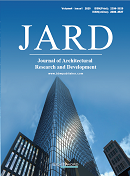Abstract
Energy consumption of the EU has a crucial environmental impact; several efforts are nowadays thus directed into massively reducing energy consumption by envelope improvement, system efficiency and smart control. On the other hand, the indoor thermal and lighting conditions significantly influence users' wellbeing and productivity, which is especially important when dealing with educational and working facilities. Strategies to enhance system efficiency are focused on design and construction aspects. These strategies ease to promote a powerful approach which is needed when focusing on existing buildings in need of retrofit measures. When dealing with new or refurbished buildings, energy saving has a further step to achieve. In the last years, research trends moved towards an increasing inclusion of human factors in energy evaluation. This allows to account for the occupancy variability in the energy analyses, considering how to bridge the performance gap between predictive models and actual consumptions due to indoor thermal settings. In empty buildings energy consumption is huge and economic efforts are wasted, due to unconscious energy-wasting behaviors. Previous studies with Interactive Virtual Environments confirmed that indoor environments illuminated by different color lights lead to the perception of different levels of thermal comfort. The results of the present paper replicate previous evidence collected in real conditions, suggesting that Virtual Reality is a valid and reliable tool to assess thermal comfort more quickly and cheaply. This paper provides a further perspective on this topic, including also the use of different fragrances to understand how the indoor environment could be enhanced and manipulated to increase wellbeing, thermal perception and finally energy saving.
